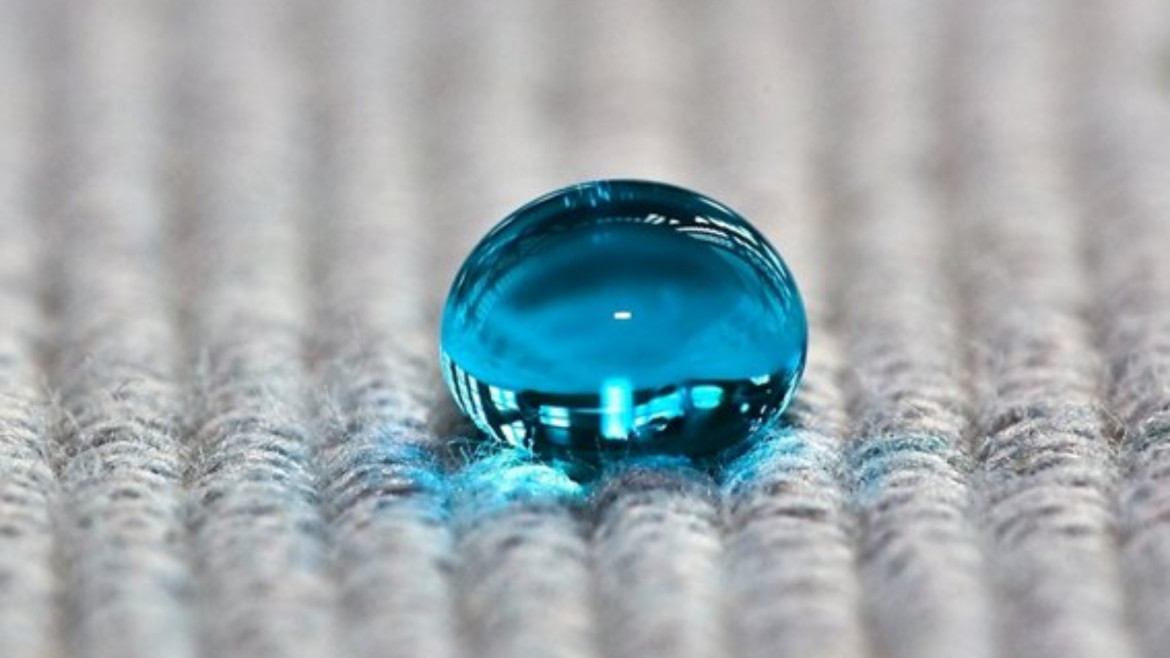 Aug
10
Aug
10
Self-Cleaning Fabrics in Sportswear
- 10 August 2024
- 0 Comment(s)
Be it sports or fitness, athletes usually adopt gears that improve their performance and comfort. New in the field of sportswear are self-cleaning fabrics. These advanced materials promise to transform how we maintain our workout or custom sports and running clothing by keeping them clean with minimal effort.
So, if self-cleaning fabrics in sportswear are very much a thing, how do they work, and what technology is behind all of this? This blog presents the key methods for achieving self-cleaning sportswear and the different types of surfaces these fabrics can have.
Top 4 Techniques Used to Produce Self Cleaning Sportswear
Lotus Effect
Nature’s cleaning mechanism inspires the Lotus Effect. Observing the lotus leaf, which remains clean despite growing in muddy waters, scientists have developed a similar technology for fabrics. The fabric creates a superhydrophobic surface that repels water and dirt to achieve this effect.
This, in turn, means applying a special coating on the fabric with tiny, minuscule structures that look like the rough surface of a lotus leaf. These structures ensure that water droplets bead up and roll off the fabric, taking dirt and grime with them. This technology keeps the fabric clean but also assists in maintaining its original color and texture over time.
Photo Catalyst Technique
A unique method for self-cleaning fabrics in sports cleaning is based on the implementation of photocatalysts. Like titanium dioxide, these substances have the magical ability to disintegrate organic matter in natural light. These photocatalysts become part of the fabric and have an ongoing effect on decomposing dirt or stains as they are exposed to light.
When exposed to sunlight or UV light, the photocatalysts activate and generate reactive oxygen species of the oxidized type, which decompose organic stains into harmless components like water and carbon dioxide. This means that even after an intense workout session, the fabric can continue to clean itself when exposed to natural or artificial light.
Using Carbon Nanotubes
Carbon nanotubes are hollow cylinders of nanometer size made of carbon atoms organized in a hexagonal pattern. These materials are widely recognized for their high performance, durability, and flexibility. When integrated into fabrics, carbon nanotubes contribute to their self-cleaning properties in several ways.
They help create a stronger outer layer that is more resistant to stains and dirt. Secondly, their unusual chemical composition makes for a hydrophobic layer that prevents water—and oil-based stains from adhering to it. Carbon nanotubes help improve breathability and overall performance, which makes them suitable for high-end sportswear.
Microwaves
Microwave technology is a relatively new entrant in the world of self-cleaning fabrics. This involves incorporating a specific type of nanoparticles in the fabric that reacts to microwave radiation. These nanoparticles produce heat, breaking down stains and dirt using microwaves.
This method is particularly helpful for fabrics that need frequent washing, as microwave-induced heat effectively cleans the fabric without harsh chemicals. Moreover, it helps preserve the fabric in its original condition and performance, ensuring it remains in top condition even after multiple washes.
Types of Surfaces Self-Cleaning Clothes
Smooth Hydrophilic Surfaces
Hydrophilic surfaces attract water, making them the opposite of hydrophobic surfaces. In the case of self-cleaning textiles, it helps that smooth hydrophilic (water-attracting) surfaces should make sure to remove dirty stains. It tends to carry away contaminants with it while soaking the fabrics since they are treated with substances designed to increase their water absorbency.
Hydrophilic smooth surfaces are not as effective a deterrent to dirt accumulation (as compared with hydrophobic ones) but can perform well where health is at risk and moisture management is critical. For example, these fabrics can assist in wicking sweat away from your body and keeping you dry during those grueling workouts.
Smooth Hydrophobic Surfaces
On the other hand, smooth hydrophobic surfaces repel water, which makes them ideal for preventing stains and dirt accumulation. These types of surfaces are made by applying special coatings or treatments to the fabric, such that a non-stick layer repels most liquids.
This layer enables water and other liquids to form droplets that roll off the fabric instead of seeping in. The fabric repels dirt and grit better, making it easier to maintain the sportswear. Smooth hydrophobic surfaces are particularly useful for sportswear exposed to sweat or other moisture.
Rough Hydrophobic Surfaces
Rough hydrophobic surfaces are designed to combine the best of both worlds by incorporating a textured finish that enhances water repellency. These surfaces are achieved by coating or treating with a substance that creates the micro-morphology of fabric surfaces, much like the texture of the lotus leaf.
This rough texture causes water droplets to bead on the surface, not penetrating the fabric. This will help encourage water and, at the same time, speed up dirt and stain removal. Rough and hydrophobic surfaces are useful for sportswear that is expected to survive harsh conditions or long-term use.
The Bottom Line About Self-Cleaning Fabrics in Sportswear
Generally, self-cleaning fabrics are a significant aspect of sportswear that considers convenience, efficiency, and longevity. Using technologies like the Lotus Effect, photocatalysis, carbon nanotube, or microwave-induced cleaning promises to keep these fabrics fresh and functional with minimal effort.
Thus, as technology continues to flourish, we can see even greater improvements in self-cleaning fabrics that will change sportswear or custom casual wear much more. These additions help enhance the performance of athletic wear and provide a sustainable way for us to care for our sportswear. You can trust TD Sportswear which is designed with advanced fabrics.
